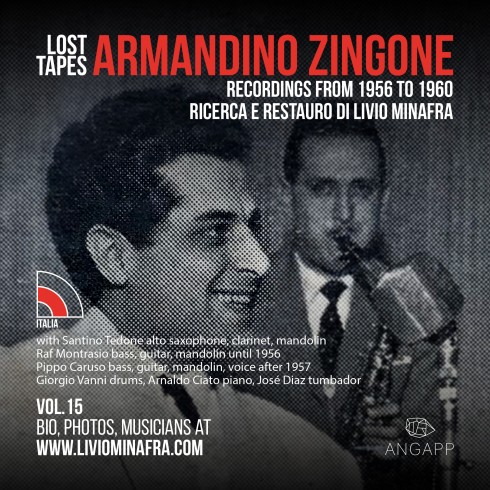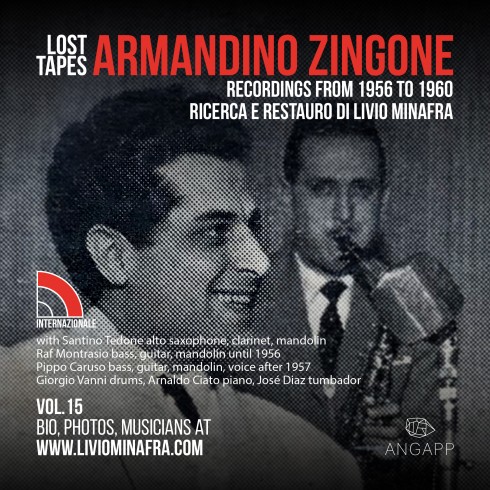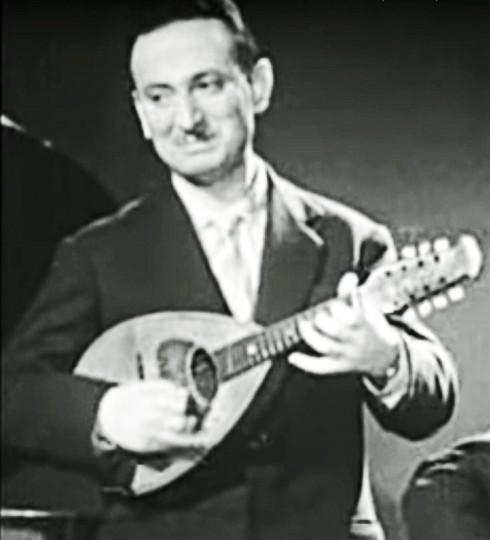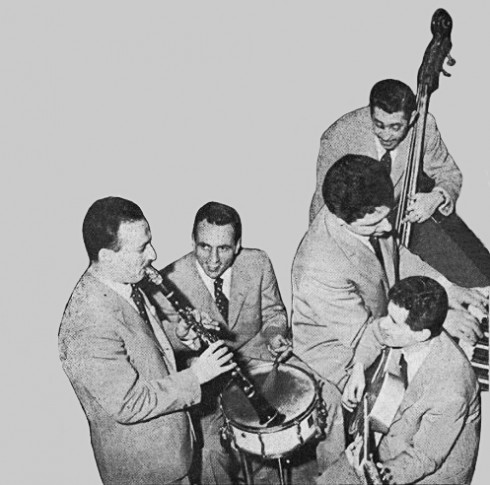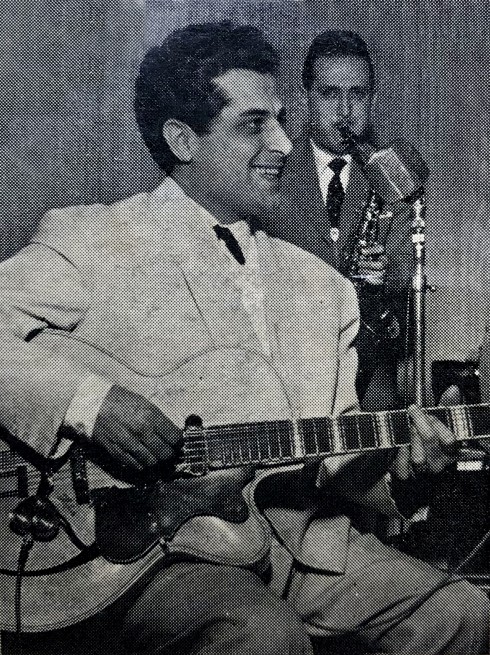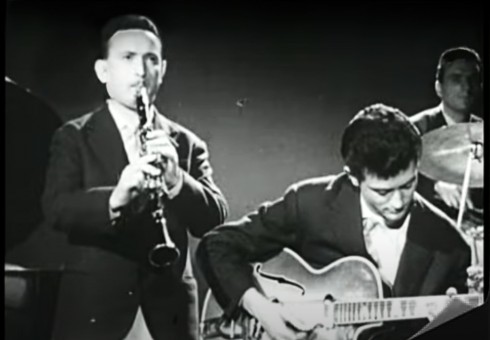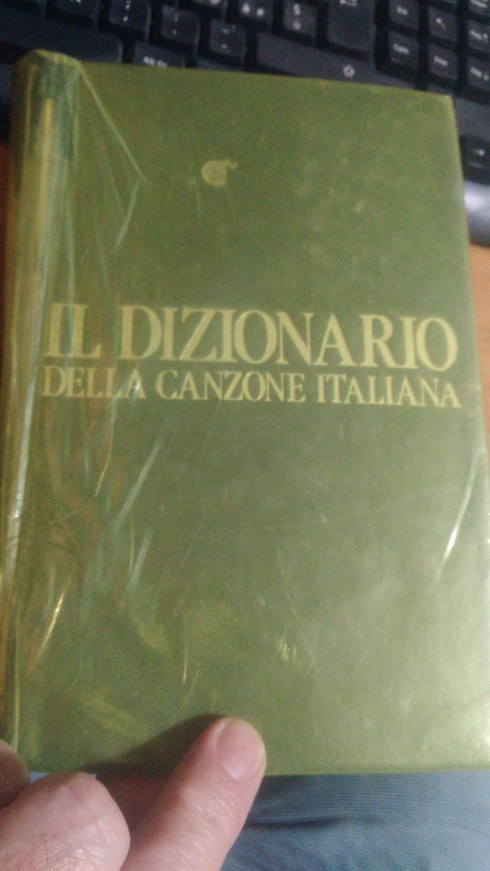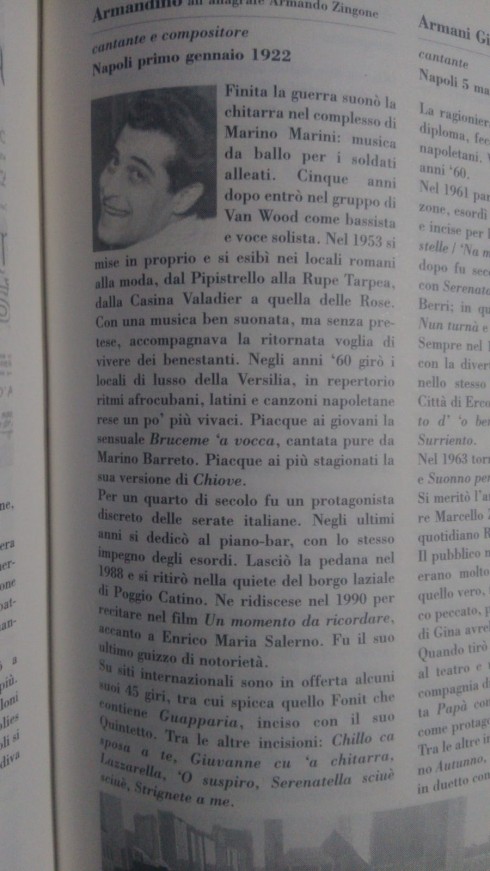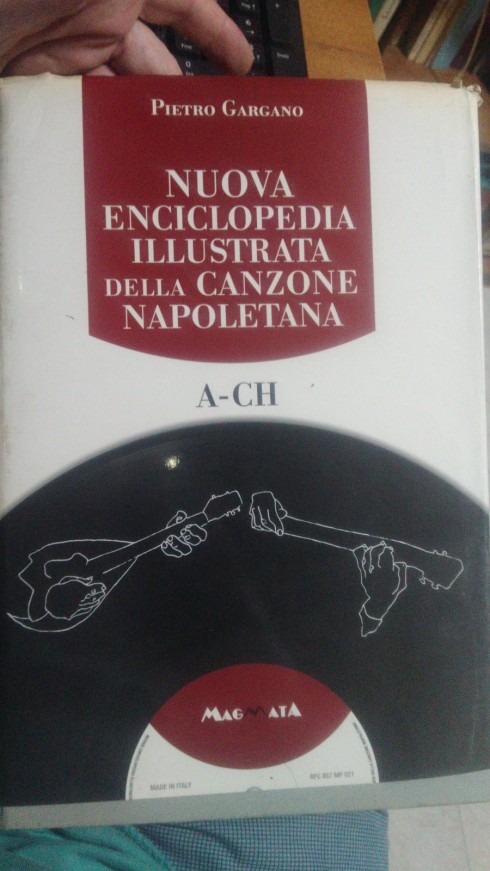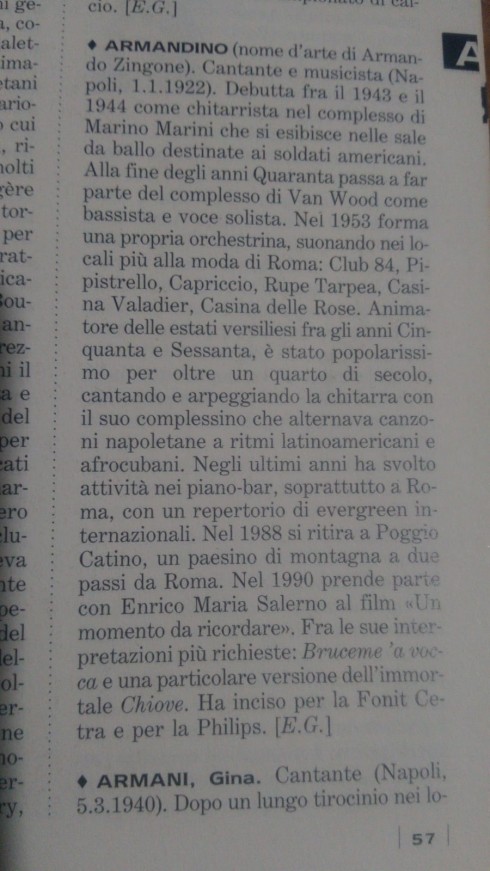Title: Lost Tapes Vol. 15 Armandino Zingone
Group: Armandino e il suo quintetto
Musiciens: Santino Tedone alto saxophone, clarinet, mandolin, Raf Montrasio bass, guitar, mandolin until 1956, Pippo Caruso bass, guitar, mandolin, voice after 1957, Giorgio Vanni drums, Arnaldo Ciato piano, José Diaz tumbador
Years: 1956/60 © 2023
Graphic: 3Heads Agency
Text: Livio Minafra
Discover, digitalization, sound track selection, editing: Livio Minafra
Mastering and restoration sound engineer: Martino Tempesta, Nico Marziale
Label: Angapp Music – It
Produced by: Livio Minafra
Armando Zingone, known as Armandino, was born in Naples on January 1, 1922, although it is presumed that he was registered on January 1, even though he was born at the end of 1921, as was customary at the time. Besides being a tailor like his father and doing various odd jobs, there is little information about his early years in the Neapolitan music scene, except for these lines from Il Discobolo[1]: “After starting to play in venues in his city, the opportunity to gain national recognition came in 1943 when Marino Marini, after hearing him play, offered him a position as a guitarist in his band.” Pietro Gargano continues[2]: “He made his debut as a guitarist in Marino Marini’s band between 1943 and 1944, performing in dance halls for American soldiers. In the late 1940s, he joined Peter Van Wood’s band as a bassist and lead vocalist. In 1953, he formed his own small orchestra, performing in the trendiest venues in Rome: Club 84, Pipistrello, Capriccio, Rupe Tarpea, Casina Valadier, Casina delle Rose, and even at the Ambra Jovinelli Theater.” During these years, he also had the opportunity to collaborate with Fred Buscaglione. As for his orchestra, Zingone chose the name Armandino and his quintet, and between 1956 and 1960, he recorded for various labels, such as Cetra and Philips (now the subject of the CD “Angapp Lost Tapes Vol. 15 Armandino Zingone ‘Napoli,’ ‘Italia,’ and ‘International'”). This period marked Zingone’s peak of popularity. He was able to build a highly respected quintet, thanks in part to his unrecognized talent as a talent scout. Until the end of 1956, the band included Raf Montrasio, a guitarist who later joined Carosone’s band with a significant increase in his fee, from 1,800 lire to 15,000 lire per night. It should be mentioned that Zingone had met Montrasio, who was from Brianza, in Milan for some concerts. Their collaboration started immediately, and Raf suggested to Zingone to include the pianist, his fellow regional musician Arnaldo Ciato. However, after Montrasio left (leaving Ciato in the band), Armandino called Pippo Caruso to replace him. Pippo Caruso, a friend of Enzo Lorusso from Ruvo di Puglia, would later become well-known for generations thanks to Pippo Baudo, serving as the conductor of the Rai Orchestra in Rome and Milan. Giorgio Vanni, on drums, later opened the famous jazz club Capolinea in Milan. It is also interesting that a singer like Armandino wanted to have a jazz musician in the lineup, not just an instrumentalist. Playing the saxophone and clarinet was Santino Tedone, originally from Puglia, who had made a name for himself in Naples after moving there from Ruvo di Puglia in 1949.
There is currently an edition of Armando Zingone’s collaboration with Marino Marini available on the web, edited by BnF Collection in the Variété Internationale series. As for his collaboration with Van Wood, one can simply search for the works of the Dutch guitarist in the mid-1950s, shortly after separating from Renato Carosone and just before Armandino formed his own group, roughly between 1952 and 1956, the year he began recording with his Quintet, definitively parting ways with Van Wood.
The quintet continued into the 1960s and disbanded in the mid-1970s. Times and tastes had changed.
Continuing with Gargano’s account: “An entertainer during the summers in Versilia in the 1950s and 1960s, he was extremely popular for over a quarter of a century, singing and playing guitar with his small band that alternated Neapolitan songs with Latin American and Afro-Cuban rhythms. In recent years, he performed in piano bars, especially in Rome, with a repertoire of international evergreens. In 1988, he retired to Poggio Catino, a small mountain village near Rome. In 1990, he appeared in the film ‘Un momento da ricordare’ with Enrico Maria Salerno. Il Discobolo also reminds us of his participation in the film “I due vigili” in 1967, directed by Giuseppe Orlandini, and with his group in the 1963 musical “Canzoni in Bikini,” directed by Giuseppe Vari.
In his later years, he returned to his hometown area and lived in Procida. He passed away on October 22, 2011, in Naples, at the Federico II Polyclinic, at the age of 89.
Livio Minafra, July 10, 2023
[1] From the website http://www.ildiscobolo.net/
[2] Excerpt taken from the Nuova Enciclopedia Illustrata della Canzone Napoletana (Publisher: Magmata, 2015).

 English
English Italiano
Italiano
